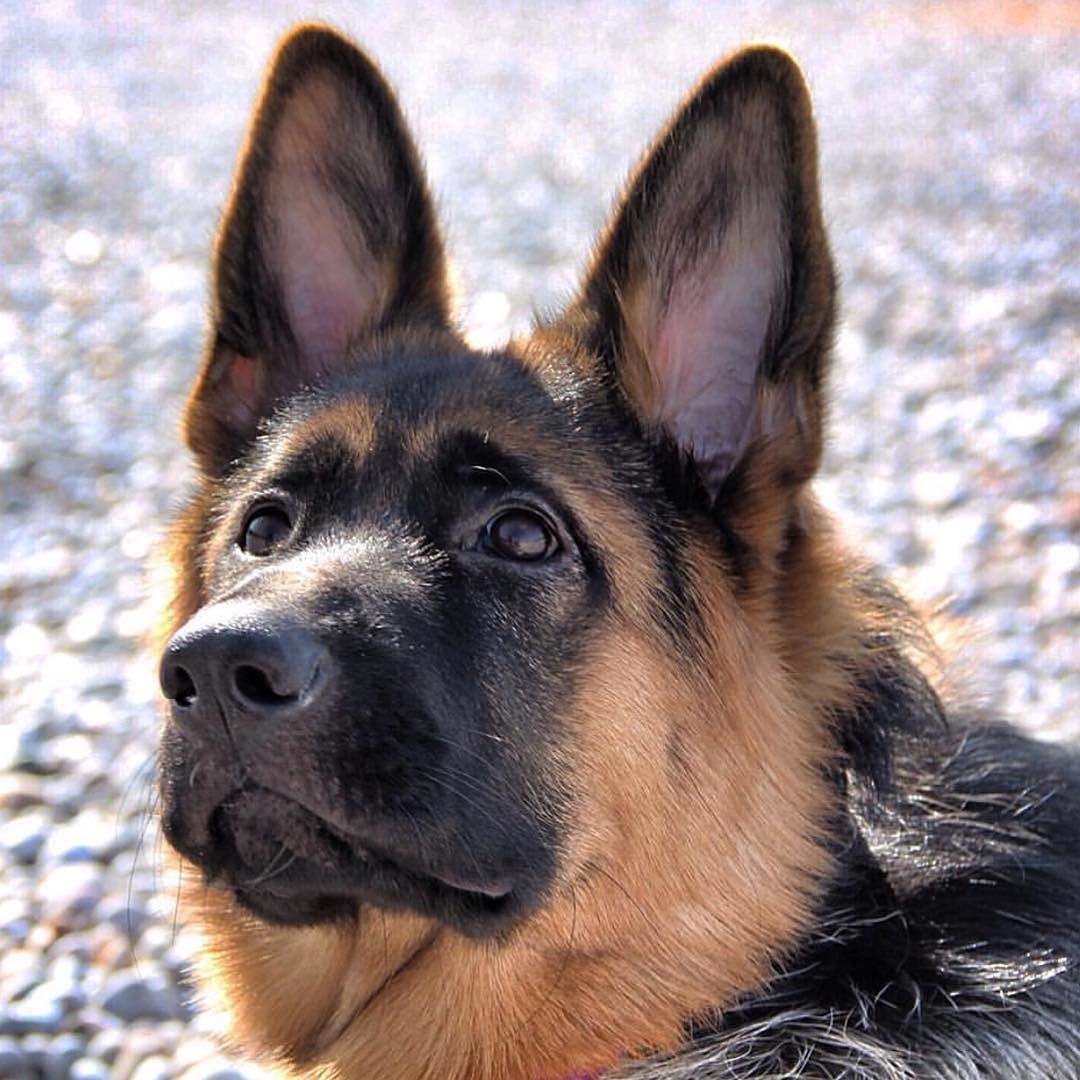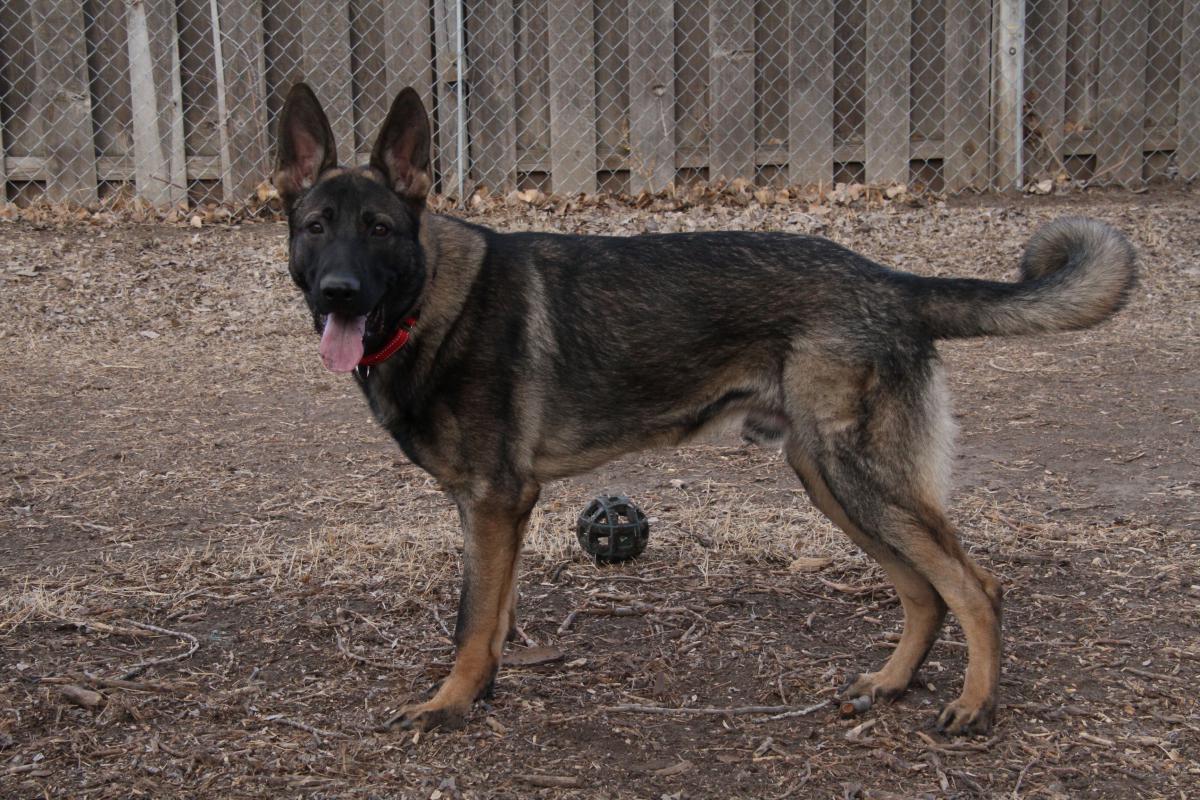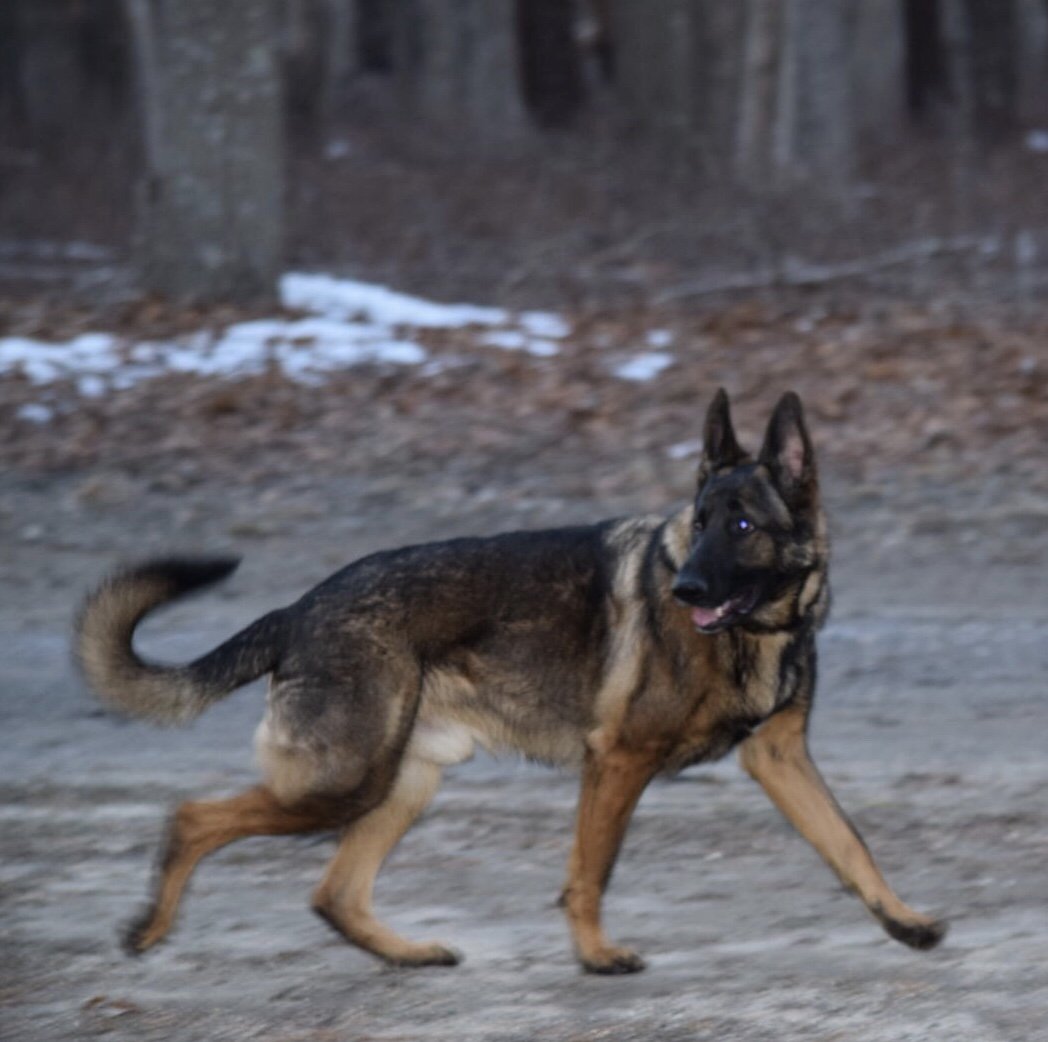Why Does A German Shepherds Tail Curl
Another inherited genetic fault that GSDs suffer from is the curled tail.A German Shepherd curled tail meaning it has a gay tail. Characterized by a tail that is carried higher than the horizontal level of the back, curling upwards, gay tail is a genetic fault. Since it is a genetic fault, chances of fixing it is next to nothing. Sadly, some owners and breeders will do anything for fame and money, so they will opt for surgery. Problem is, surgery wont keep the supposed show quality puppies from inheriting gay tail,too.
Fortunately, not all German Shepherd puppy tail curls. For some it is just a mannerism that can be eliminated by training. Clicker training method can be used to train GSD show dogs to hold their tails in a particular position when standing. This method will need time and patience from the owner.
Why Can My Puppy Have A Wavy Tail & Why Are Puppies Tails Not Directly
When your puppy is in his ordinary, happy condition, his tail will soon Be installed, gently curled over his backagain. He can wag it still curled, even if he is marginally satisfied. When his tail is curled on his back, or bristly, he is on alert. In case his hackles are up too, he is in a defensive position.
German Shepherds tails are equally as crucial as their additional body Components. It serves as a tool of communicating to their own owners, helps stabilize Them and balances them after walking. Owners may experience some German Shepherd tail issues, some could be hereditary and some might be gotten. Regular Visits to the vet may guarantee GSD tail wellness in check.
- TAGS
How Long Can A German Shepherd Live With Hip Dysplasia
Dogs with hip dysplasia can live comfortably, long into their golden years, so even if your dear canine has been diagnosed with the condition you can expect many joyful years together. If your dog is over 7 years old, they may need additional support as they age read more about caring for a senior dog here.
Don’t Miss: Who Would Win In A Fight German Shepherd Or Pitbull
The German Shepherd Puppy Coat Is Quite Different Than The Gsd Adult Coat
Something else many first-time German Shepherd owners do not realize is that the German Shepherd puppy coat is quite different than the coat these dogs will have in adulthood.
The puppy coat is much softer and fluffier. It is also single-layer and is missing the second insulating under-layer these dogs grow as adults.
The puppy coat will start to shed out around the four to the six-month mark. The shedding out period signals the start of the adult coat growing in.
The adult German Shepherd coat is double layer. There is a longer, coarse, water-resistant outer layer that ranges from medium to long. Then there is the insulating, soft inner layer that lays close to the skin.
When the puppy coat begins to shed out, this is the time when you can expect to see your young GSDs tail getting longer and thicker as well. However, this whole process can take some time and depend in size and breed line, as we emphasized here earlier.
Every year thereafter, your German Shepherd will do something epic called blowing coat once to twice a year. This often happens at the changing of the seasons.
When the weather changes from winter to spring or fall to winter, this prompts the insulating under the layer of your dogs coat to completely shed out and regrow. This is very important for your dogs protection but can temporarily produce a very thin tail.
This is not anything to worry about. Your dogs thick, bushy tail will soon grow back as the new coat grows in.
As A Way To Communicate With You

Obvious, humans cant communicate directly with German shepherds. Thats why we always try to come up with different gestures. A prime example of these gestures is hand signals.
As previously said, German shepherds are intelligent. Thats why they developed their own way of communicating with you.
One of the ways to communicate with their owners is head tilting. Take note, however, that German shepherd head tilts can mean different things depending on the situation.
Read Also: Is A German Shepherd Considered An Aggressive Breed
What Do You Need To Know About German Shepherds
7 Fun Facts 1 The gene which gives the German Shepherd their long hair is a recessive gene. 2 Only 10% of German Shepherds are of the long-hair variety. 3 The AKC labels this variety as a genetic fault so this breed is not allowed to compete in dog shows. 4 GSD puppies are typically born with floppy ears that perk up over time.
How Do You Tell If Your German Shepherd Loves You
1) They cant help but kiss or lick you. Dogs learn to lick and kiss during puppyhood. 2) They like staying close to you. 3) They often snuggle or cuddle. 4) They lean on you. 5) They allow you to hug them. 6) They ask for rubs. 7) Theyre always happy to see you. 8) They keep wanting to play.
Don’t Miss: Do German Shepherds Like Other Dogs
Common German Shepherd Tail Problems
Aside from communicating their feelings using their tails, German Shepherds can display several health-related problems through their tails. While some of the German shepherd tail problems can be resolved, others simply dont have solutions. Therefore, as the owner, you should always be on the look-out for the following German Shepherd tail problems:
German Shepherd Tail Problems: What Is The Tail
A healthy German Shepherd dog stands tall, exudes confidence and charisma. They are loyal, responsible, fearless, and intelligent. They will protect you with their life. Versatile as it is, it takes efforts and works to keep a GSD healthy. A healthy GSD will weigh 50 to 90 pounds and have a lifespan of 10 to 13 years depending on various conditions. Rigorous training sessions, good diet are quintessential for long life. They are however indoor dogs and should as a member of the family. They get along with other house pets as well, especially if they are brought up together since puppyhood. They are protective in nature and will make you feel safe. They are interactive and will, therefore, talk to you in their own way.
What tongue and voice are to you, is tail to German Shepherds. They communicate with tails. Therefore it is you who should learn their language to have a better understanding of your pet. They express emotions such as excitement, nervousness, dominance, relaxation, insecurity, confusion through their tails and it does not take much time for a GSD lover to read these signals. Tails are an important part of their physique and therefore also vulnerable to diseases like any other part of the body.
Knowing that tails are the primary communicators used by German Shepherd dogs,here is a chart of tails signals of a GSD:
What is the best way to ensure my German Shepherd dog does not have tail problems?
What is it?
Read Also: How Much Is A German Shepherd In The Philippines
Do German Shepherds Like To Be Held
3) They often snuggle or cuddle. Apart from following you around, German Shepherds like to feel physically close to you. Snuggling or cuddling is one of the best signs that your GSD is being affectionate because this is one way they treat you as part of their pack.
Top Best Answers To The Question Why Does A German Shepherds Tail Curl
A more aggressive GSD will move its tail high up and over its back to initiate a fight with another dog Sometimes the tail can be seen curled. A GSD that holds its tail upright and stiff means they are the pack leader.
Those who are looking for an answer to the question «Why does a german shepherds tail curl?» often ask the followingquestions:
Read Also: Can A Chihuahua And A German Shepherd Mate
Anal Furunculosis In German Shepherds
A common hereditary problem that German Shepherds get affecting their tails is anal furunculosis. An astounding 84% of cases are in the German Shepherd breed.
Anal furunculosis is a long-term progressive inflammatory disease, causing ulcers and fistulas or cavities in the skin around the underneath area of the tail and around the anus of the dog.
The disease is carried down by either one or both parents and can be avoided with selective breeding and genetic testing, although neither can guarantee the disease wont spread to the puppies.
This disease is aggravated by the common tail position of a classic German Shepherd. The bushy tail is held close to the anus when in a normal position. The disease thrives in areas like these with constant moisture and lack of air movement.
In this case, having a highly held or curly tail held above the horizontal may decrease the diseases recurrence or severity to some degree in German Shepherds. The skin under the tail is better exposed to oxygen. It can remain dry easily with less contact against the anus, as is the case in dogs with a highly held or curly tail.
To Get A Better View Of Things

The mouth of German shepherds can sometimes block their views on certain angles.
In fact, there are even many other parts of the body that blocks a dogs view, as seen with breeds with flat faces. A recent study discovered that those with flat faces and big mouths are the ones that often do head tilts.
Since German shepherds have large mouths, they tilt their heads in order to get a better view of what theyre looking at.
They are especially attracted to you, their owner, and thats why you may often see them tilting their heads while looking at you.
Also Check: Pitbull Dog Vs German Shepherd Fight
Is Obsessive Tail Chasing Bad For Your German Shepherd
Do you love seeing your GSD pup chasing its tail? They love loving round and round, trying to chase their tail and when they catch it, they produce that low growling sound.
It means they won. No matter how fun it is watching your pup chasing its tail, the act itself tells something about your pet.
- You will see your GSD catching its tail when it finds itself in a small enclosure. When a GSD is placed in a cramped space, it becomes anxious, hence it catches its tail
- You will see your GSD catching its tail when it is boring. If you havent been out with your dog for a day or two, it might need physical activity, and catching its tail is the best activity it might find
When your GSD is bored or anxious, they will end up chasing their tails obsessively until they hurt themselves.
Did You Know The Gsd Has Different Breed Lines
While on the one hand, every German Shepherd dog alive today can trace its lineage back to the original Captain von Stephanitz dog breed line to some degree, there has also been quite a bit of divergence in modern GSD breeding.
There are two main distinctions in todays German Shepherds: the show line and the working dog line.
As one German Shepherd breeder specifies, there are five sub-types from these two main lines:
- American show GSD.
- Czech working GSD.
- DDR / East German working GSD.
This is important to know if you are purchasing a German Shepherd dog for a specific purpose or goal.
For example, lets say you want to show your GSD in competitions for conformation. In this case, you would be smart to choose a breeder that specializes in either the American or West German show GSD breed line.
This is because show lines are bred for appearance and conformation. These are the dogs that are most likely to grow up and develop the trademark German Shepherds long bushy tail.
In contrast, working GSD lines are bred for personality and temperament traits. Appearance is always secondary.
As you can see in these photos from the breeder cited here earlier, the working dog breed lines typically have thinner tails and sometimes the tails are curled, which could result in points off or disqualification in the show dog ring.
Also Check: Where To Buy German Shepherd Husky Mix
German Shepherd Tail Positions
The tail is usually carried in a curve when the dog is at rest.
When the dog is excited or in an emotional state, the tail will sometimes be carried up in a curve or in an even higher position, like a plume.
An excited dog may also wag the tip of his tail even though it may not appear to move much.
The tail may be carried between the legs when the dog is nervous or is anticipating trouble.
What Does My German Shepherds Tail Mean
Tail held high and straight This means the dog feels confident and in control of a situation. The dog is feeling good. Tail lowered This means the dog is relaxed. However, while the tail is lowered, it is not between the dogs legs. Tail lowered between legs This signifies that the dog is afraid.
You May Like: How Much Should A 1 Year Old German Shepherd Weight
The German Shepherd Tail Language
According to Allshepherd.com, when a German Shepherd moves, it conveys their feelings. Heres what a GSDs tail movements and positions mean:
- Wagging to the left when a GSD is wagging its tail more to the left, it means they are feeling negative emotions such as being nervous
- Wagging to the right when a GSD is wagging its tail more to the right, it means they are feeling positive emotions such as being excited or happy for seeing you or when playing with you
- Wagging widely on both sides when a GSD is wagging its tail widely on both sides, it means they are very happy
- Slow wagging on both sides when a GSD is wagging its tail slowly on both sides, it means it is being confused
- The tail is in a downward position it means your GSD is not feeling well or upset
- The tail is lowered but not hanging it means your GSD is relaxed and is saving energy
- The tail is in between its legs it means your GSD is afraid, anxious, or is pleading not to be hurt
- The tail is straight out or is moving high up it means your GSD is ready to fight or is initiating a fight
- The tail is horizontally hanging low it means your GSD is calm and is just observing its surroundings
- The tail is moving up and is curled at the tip it means your GSD is showing confidence
In addition, Total German Shepherd explained that the way a GSD carries its tail also shows its social standing. When a German Shepherd is always holding its tail upright and stiff, it means he is the leader of the pack.
Do German Shepherds Have Curly Tails
Have you ever wondered why your German Shepherd has a curly tail? There are some problems with the tails of German Shepherds, and they are primarily genetic. The length of the German Shepherds tail should be long enough so that the end of the tail can reach the hock joint. Below you will find all the information you need on this topic.
Lets start now!
Don’t Miss: My German Shepherd Is Skinny
Top Best Answers To The Question Are German Shepherd Tails Supposed To Be Curled
Having a curled tail is not bad for German Shepherds. It is a genetic fault that affected some GSDs Having a gay tail doesn’t affect the health of your GSD. However, some owners prefer a GSD with a straight tail.
It is perfectly normal for your German Shepherd to have a curly tail. The curly tail is most often merely an inherited trait. However, it is considered a defect or genetic fault by the AKC standards.
Those who are looking for an answer to the question «Are german shepherd tails supposed to be curled?» often ask the followingquestions:
Whats The Best Way To Groom A German Shepherd

Walsh says the conformation of GSDs feet is wide-ranging, with some dogs having very thick, wide nails that are more difficult to cut and others having thinner, claw-like nails that are much easier to clip. For some dogsparticularly those with thick nailsshe has to use a Dremel tool for nail grinding in addition to clippers.
Don’t Miss: Can German Shepherds Live In Apartments
Can Pit Bulls Have Curled Tails
Do a little pitbulls possess a eyebrow. A purebred pit will Possess a direct tail. this generally signifies the tail has been held within the trunk and at a curve shape obviously. That a pitbulls tail is designed to hang down but occasionally when they perform they occasionally grip heir tail up over their back.
Is Curl Tail Bad For Your German Shepherd
Having a curled tail is not bad for German Shepherds. It is a genetic fault that affected some GSDs. Curled tail is also referred to as gay tail. This genetic fault cant be fixed.
Having a gay tail doesnt affect the health of your GSD. However, some owners prefer a GSD with a straight tail.
A straight tail projects a strong and powerful look that German Shepherds are known for. For this reason, owners of GSDs with gay tails often opt for surgical remedies.
Having your GSD undergo surgery to straighten up a curled tail is not a permanent solution. Because it is hereditary, puppies of a GSD with a gay tail will also have a gay tail even after surgery.
Read Also: When To Start Training Your German Shepherd